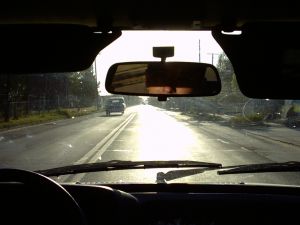The Psychology of Why Wichita Drivers Get in Rear-End Collisions
According to research from Purdue University, more than 30 percent of all multi-vehicle car accidents that occur within the U.S. are rear-end accidents.
A rear-end accident lawyer knows it is important to the safety of roads throughout Wichita to determine why so many rear-end accidents happen. Recently, Visual Expert published an in-depth report on the psychology of rear-end crashes that help to explain why these accidents are so likely to occur.
Why Are Rear-End Accidents so Common?
Drivers rely on visual information when judging whether they should brake. Most drivers don’t depend upon an assessment of headway (the space on the highway between their car and a lead vehicle) when they decide if they want to brake.
Instead, drivers use a visual cue called looming motion to assess what their time to collision (TTC) is.
The immediate time to collision is around 1.5 seconds, but drivers sometimes leave less following distance between their cars and the car that they are following behind. Drivers get close to other cars and don’t always slam on the brakes when a vehicle in front of them is looming for many different reasons. One reason is that drivers often see cars in front of them and don’t react to this stimulus by hitting the brakes every time. Another reason is because the looming of the other vehicle in front of them is just one of many factors that affects a time to collision.
The other factors that can affect time to collision include how quickly a vehicle is able to brake as well as other alternatives that a driver has. Drivers typically have imperfect information about this. For example, a car that is going around 60 MPH is not going to have had experience slamming on the brakes at that speed to see how quickly he can stop. Without knowledge of all of the factors affecting the time to collision, drivers sometimes make the wrong choice about when to act.
Drivers also do not expect a car in front of them to hit the brakes suddenly. As a result, they do not have a learned response to this stimuli when they see it. Without a learned response, more thought is required to decide how to react and drivers can take longer to actually hit the brakes in order to try to prevent an accident from happening.
A stopped car on a highway or a vehicle that suddenly slams on the brakes is thus considered to be an “error trap.†It is an error trap that is likely to result in many drivers becoming involved in crashes.
Understanding these factors can be a good first step toward helping motorists to be more informed about how to prevent rear-end accidents. Although motorists may feel safe leaving a limited following distance between their car and the vehicle in front, doing this is never really safe.
If you or a loved one has been injured in Wichita, contact Warner Law Offices. Call 866-584-1032 today.




